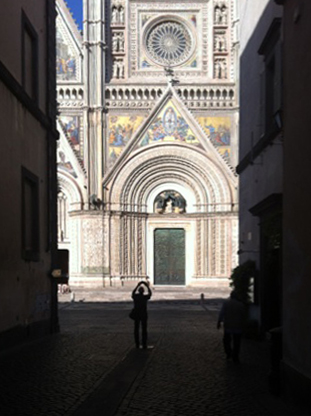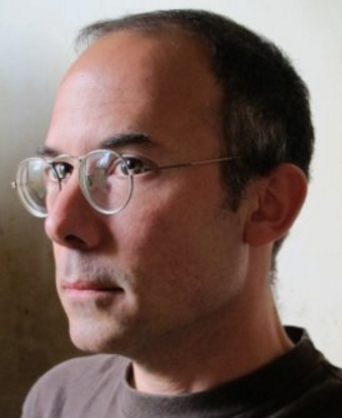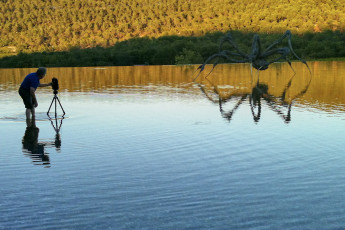David Wakely
David Wakely is an architectural photographer based in San Francisco and Sonoma County, California.
 Yes. I amended my agreements a long time ago to include website, blogs, and social media. I list very specifically the rights I’m granting to the images, which are based on the needs of the architecture and design community.
Yes. I amended my agreements a long time ago to include website, blogs, and social media. I list very specifically the rights I’m granting to the images, which are based on the needs of the architecture and design community.
I encourage my clients through my agreement to get permission from their clients for their intended marketing purposes. Property owners need to know they will be exposed all over the internet. I ask my clients to always attach my name to the images when they’re submitting the images to blogs and publications. This protects both of us.
It’s important for them to investigate who exactly is publishing their work and to understand what other rights they are asking for beyond the initial publication. I encourage my clients to work with a publicist and someone familiar with the blogosphere landscape. I ask my clients to refer all commercial inquiries directly to me, which is when another party is interested in using the images for their own promotional use. And I let them know when I’m contacted as well. We look out for each other.
César Rubio
César Rubio is a San Francisco–based photographer.
 The reality of online media dominance has not changed much in regards to usage. I have never prevented my clients from publishing the work in a variety of outlets, and have always seen the work as being more useful out in the world than stuck in a drawer. Magazine rates have always been low, and in terms of reselling images, the fees paid have not kept up with inflation.
The reality of online media dominance has not changed much in regards to usage. I have never prevented my clients from publishing the work in a variety of outlets, and have always seen the work as being more useful out in the world than stuck in a drawer. Magazine rates have always been low, and in terms of reselling images, the fees paid have not kept up with inflation.
Tracking where images are going and who is posting them is now close to impossible, but I do educate my clients on the need to not sell or give away images to other entities which have participated in the construction or design of the project. It’s crucial to my business that images get licensed to legitimate participants.
I dearly miss seeing my work printed, but it is good to have multiple placements occurring online. I think we all win in the end when the work is seen widely.
Alan Karchmer
Based in Washington, D.C., Alan Karchmer is a photographer of architecture, interior design, and the built environment.

Alan Karchmer photographing Crouching Spider by Louise Bourgeois at the Château La Coste Art Center by Tadao Ando. Photo by Sandra Benedum.
I have found it essential to adapt to the evolving ways of disseminating visual information. The traditional methods of publishing and compensation to content creators have changed forever. When my clients commission me to create photographs of their work, they need the freedom to use the images in online blogs and social media. Once photographs are online, there is little if any control over how and where they may be subsequently used. This vulnerability poses the greater concern, not only with regard to protecting the intellectual property of the photographer, but equally to the architects’ control of how their work is used. Credit lines may or may not actually appear and are easily separated from the images themselves.
The best protection is to release to blogs and social media only photographs that have been formatted for online use at a reasonably low resolution, and which include the photographer’s copyright notice and architect attribution, discretely but legibly embedded within the image area. I routinely include a separate set of images formatted this way with all the work I now deliver.
Tim Griffith
Tim Griffith is an architectural photographer based in San Francisco and Singapore.
 Yes, the usage agreements I have with clients are continually being revised and refined to account for the changes in the way photographs are being distributed online. Different firms have different approaches for how much they actively engage with online distribution of their work. In all cases though, having the flexibility to respond to whatever opportunities arise seems to be a primary concern. Older distribution models where the “number of eyeballs” determined the value of the publication are all but extinct, so assigning a specific value to the broader use of photographs, outside the traditional marketing needs of a firm, has been a challenging proposition. Largely because it is impossible to gauge the real degree of visibility once project images go online.
Yes, the usage agreements I have with clients are continually being revised and refined to account for the changes in the way photographs are being distributed online. Different firms have different approaches for how much they actively engage with online distribution of their work. In all cases though, having the flexibility to respond to whatever opportunities arise seems to be a primary concern. Older distribution models where the “number of eyeballs” determined the value of the publication are all but extinct, so assigning a specific value to the broader use of photographs, outside the traditional marketing needs of a firm, has been a challenging proposition. Largely because it is impossible to gauge the real degree of visibility once project images go online.
In order to simplify the process of assigning a value to this broader use, I currently add an optional but recommended line item that provides for an editorial license. This fee is based on a percentage of the base shoot fee for the assignment. The editorial license enables the firm to distribute images to online publications and through their social media platforms. In my experience, this kind of blanket agreement saves time and resources for both the firm’s marketing staff and for the photographer. The photographer derives reasonable compensation for the broader use from the outset, and the firm benefits from the added flexibility to pursue opportunities for online exposure. The specifics of this kind of arrangement can always be adapted for individual projects and the particular needs of individual firms.
In advising clients on how to prepare project images for supply to online outlets, I usually suggest the following:
1. Limit the number of photographs of any one project that you send.
Online publications are not limited by space on a printed page. So be aware that everything you send will be put online. Once that material is online, you immediately lose any control over where and in what context it will be seen and/or repurposed. Sending your entire collection of photographs, renderings, floor plans, etc. vastly lessens the likelihood of anyone visiting your firm’s own website. At the end of the day, the visibility for your firm’s work is just as effective with five images as it is for 50.
2. Limit the pixel size of photographs that you send of any one project.
Just because an online publication asks for big files doesn’t mean you have to send them big files. They will still publish the project with whatever you send them. Of course they want the “best experience” for their viewers, but that is for the publication’s benefit, not your firm’s. If the viewer wants to see bigger, better images of the project, they can visit your firm’s website.
3. Add a subtle watermark to the photograph with the photographer’s name and your firm’s name.
This can be automated within many of the common image editing programs. Adding a watermark embeds the source of the image so that when (not if) it is reposted and redistributed out of its original context, there is at least some attribution to the photographer and the designer of the work. This is one small way to protect the integrity of the images your firm has invested in producing. I have never had an online publication refuse to publish an image because it was watermarked.
4. Read the Fine Print of the User Agreements.
All the major online outlets have user agreements that come into effect when you choose to upload content. The terms of these agreements are heavily biased to protect the interests of the publisher, not the content creator. In most cases, the party uploading the image carries all liability for any action arising out of the use or misuse of the images by a third party. The publication, which enabled the additional distribution or reuse, bears no responsibility at all.
I fully expect that my usage agreements will continue to adapt as the needs of my clients evolve. Ultimately, my photographs need to be useful in promoting the work of the firm, so it is in all our interests to find a mutually beneficial approach to facilitate that outcome.